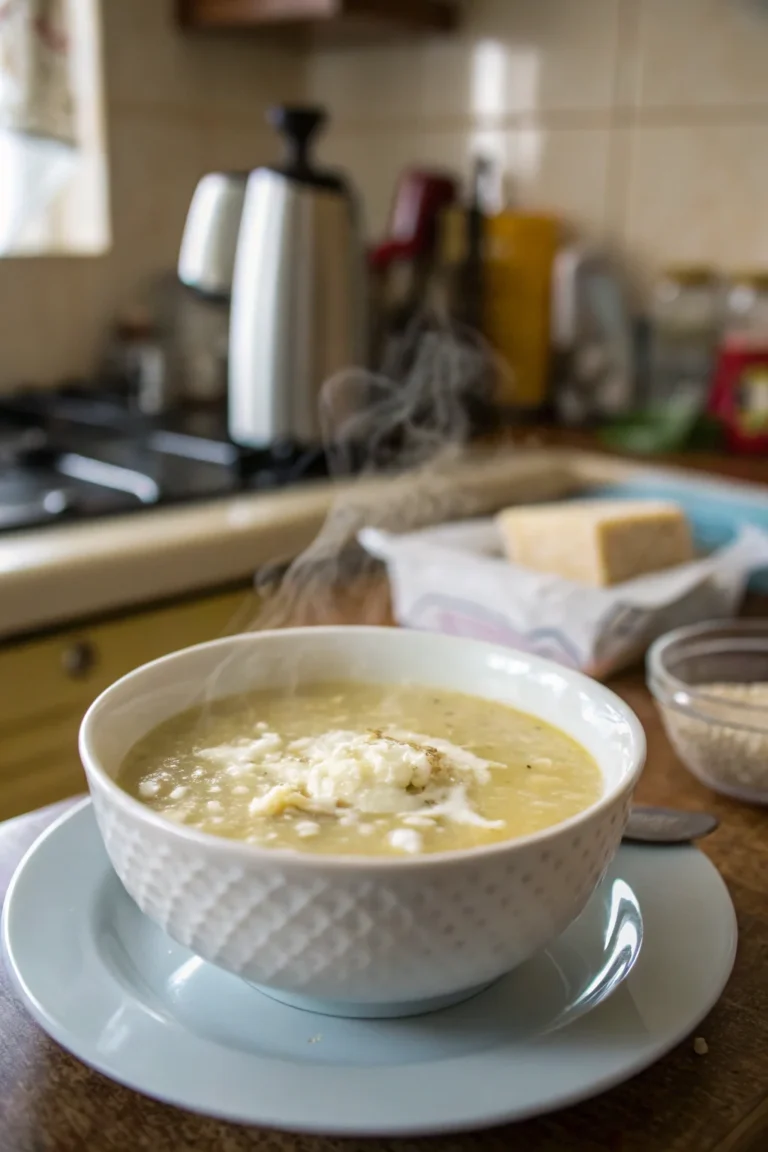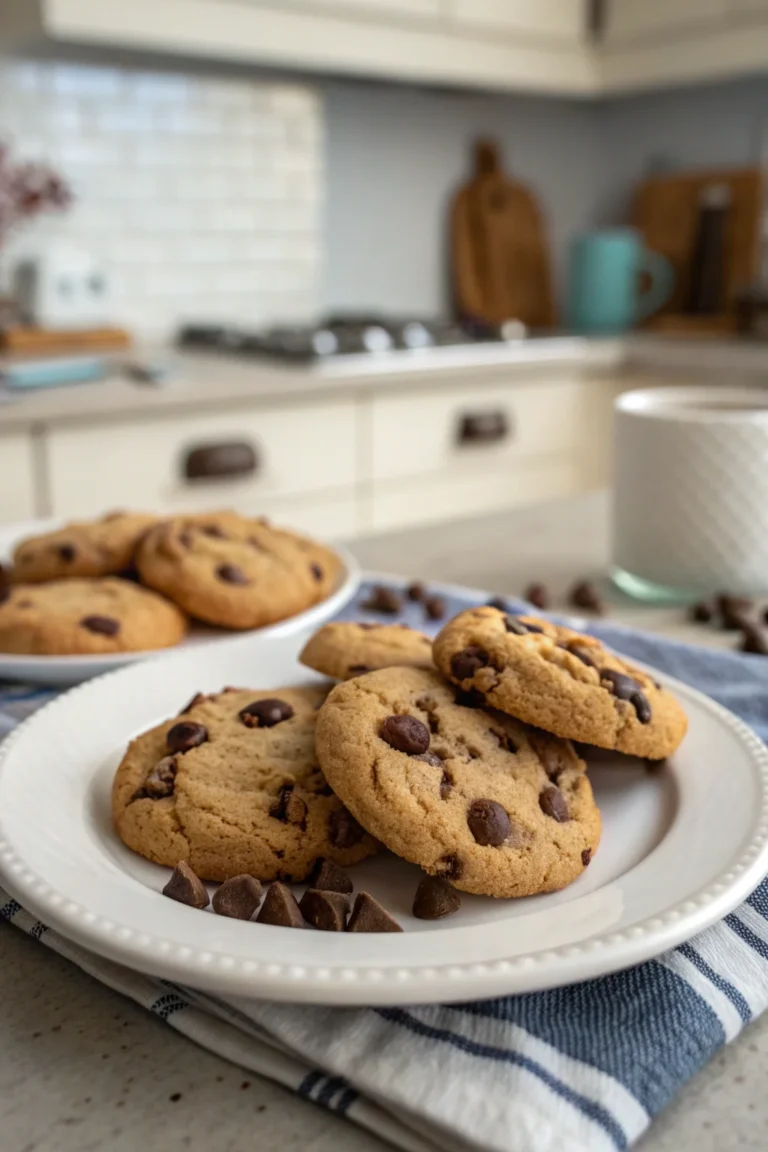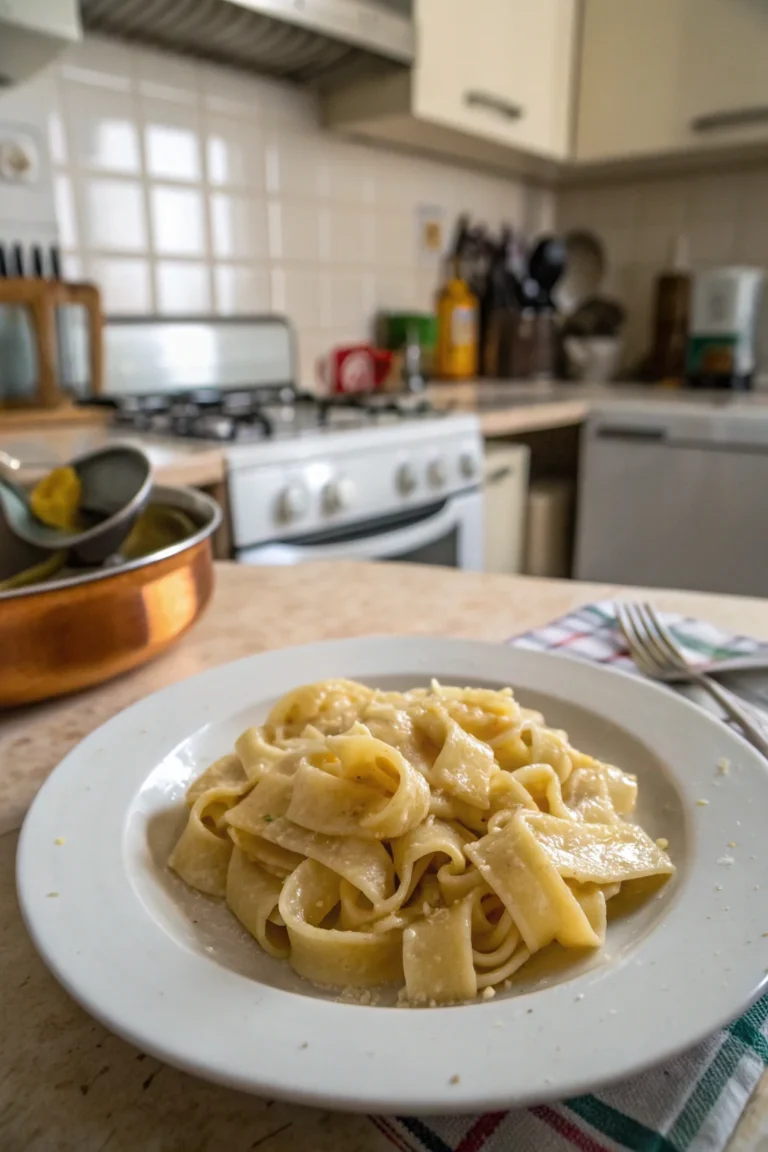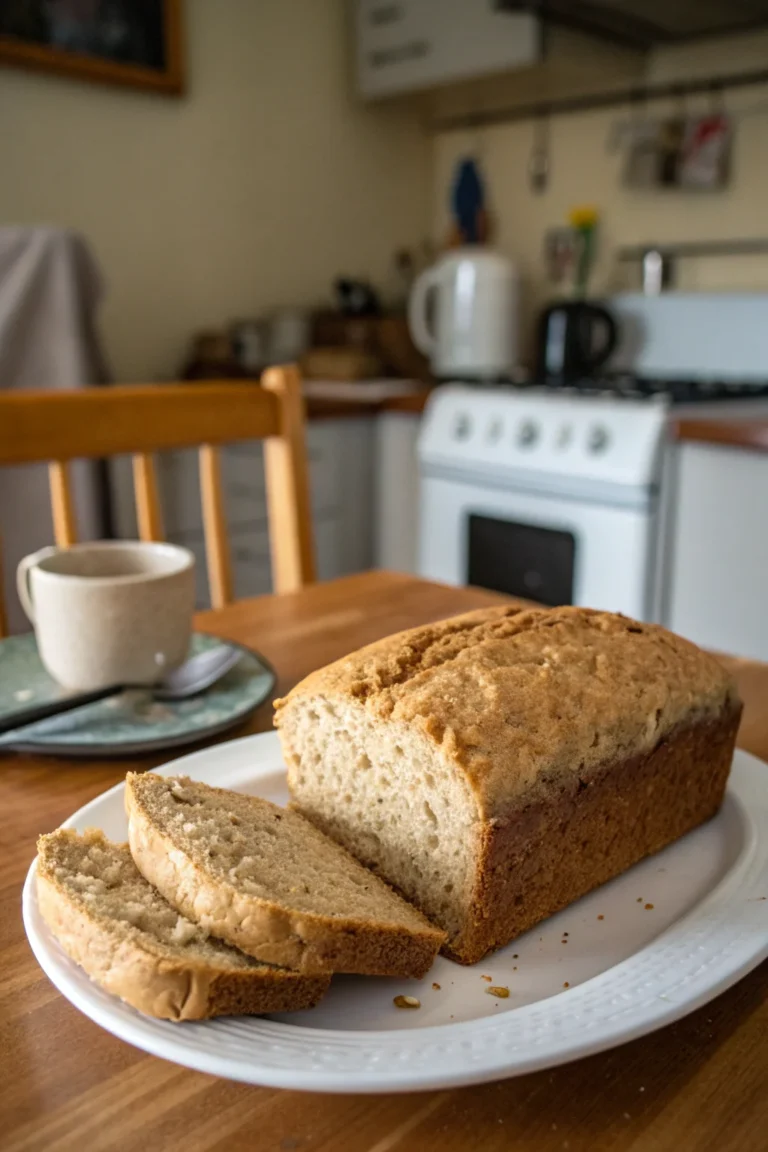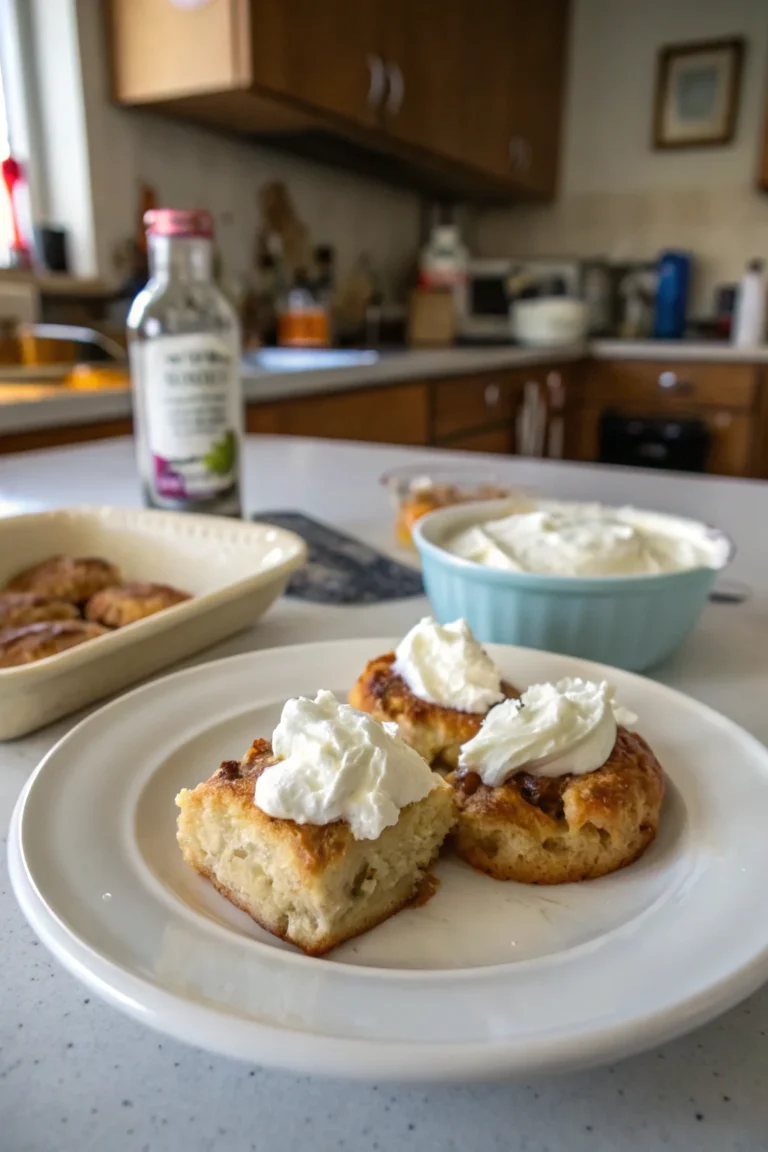How to Make Perfectly Fluffy Scrambled Eggs
Scrambled eggs are a breakfast classic, but achieving that perfect fluffy texture can sometimes feel elusive. With a few simple techniques and the right ingredients, you can consistently whip up eggs that are light, airy, and delicious. This guide will walk you through everything you need to know to make perfectly fluffy scrambled eggs every time.
Table of Contents
What ingredients do you need for fluffy scrambled eggs?

For perfectly fluffy scrambled eggs, you’ll need:
- Fresh eggs: The fresher, the better. Fresh eggs have a tighter structure that helps create a fluffier texture. When eggs are fresh, the whites are thicker and more cohesive, which contributes to a better overall consistency.
- Milk or cream: Adds creaminess and volume. Milk tends to make the eggs lighter, while cream gives them a richer texture. Choosing between the two depends on your personal preference for flavor and texture.
- Butter: Enhances flavor and prevents sticking. Butter not only adds a luscious flavor to the eggs but also helps them cook evenly without sticking to the pan. The moisture content in butter also aids in preventing the eggs from drying out.
- Salt and pepper: Essential for seasoning. These basic seasonings enhance the natural flavors of the eggs.
- Optional: Herbs like chives or parsley for garnish. Fresh herbs can add a pop of color and a subtle aromatic flavor that complements the eggs wonderfully.
Using fresh eggs is crucial as they have a better structure for fluffiness. Milk or cream adds moisture and tenderness, while butter contributes to a rich flavor and prevents the eggs from sticking to the pan. Experiment with different amounts of milk or cream to find the balance that suits your taste.
How do you beat eggs for fluffiness?
Beating the eggs properly is key to achieving fluffiness. Here’s how:
- Crack the eggs into a bowl. Ensure no shells make their way into the mix, as even small pieces can affect texture.
- Add a splash of milk or cream (about 1 tablespoon per egg). This step is crucial for achieving the desired creaminess and fluffiness.
- Season with salt and pepper. Adding seasoning at this stage helps distribute the flavors evenly throughout the mixture.
- Use a fork or whisk to beat the eggs vigorously for about 30–60 seconds. The goal is to fully incorporate the yolks and whites into a homogeneous mixture.
Ensure the yolks and whites are thoroughly combined. The more air you incorporate at this stage, the fluffier your scrambled eggs will be. Using a whisk can help add more air than a fork. If you have an electric whisk or a hand blender, these tools can also be used to achieve the perfect consistency, though they are not necessary.
What type of pan should you use?
A non-stick skillet is ideal for making scrambled eggs. It provides an even cooking surface and prevents the eggs from sticking. Here’s why a non-stick skillet is beneficial:
- Even heat distribution: Ensures uniform cooking. This is important because it allows the eggs to cook evenly, preventing some parts from overcooking while others remain undercooked.
- Ease of cleaning: Eggs slide right off, making cleanup a breeze. The non-stick surface prevents eggs from adhering to the pan, which also helps maintain their airy texture.
- Use medium-low heat: Helps cook the eggs gently. Cooking on medium-low heat allows the eggs to cook slowly and evenly, which is essential for preventing them from becoming rubbery.
If you don’t have a non-stick pan, a well-seasoned cast-iron skillet can also work well. Ensure your cast iron is properly seasoned to prevent sticking.
Why is the cooking temperature important?
Cooking temperature significantly affects the texture of scrambled eggs. Here’s what you need to know:
- Medium-low heat: Allows for slow, even cooking, which is crucial for fluffiness. Cooking at this temperature helps the proteins in the eggs set slowly and uniformly, leading to a soft, tender texture.
- Avoid high heat: Cooking too quickly can make eggs rubbery. High heat causes the proteins to coagulate too quickly, resulting in a tougher texture.
Cooking slowly over lower heat ensures the eggs remain tender and creamy. Patience is key to achieving the best texture. If you’re in a hurry, try turning down the heat just a notch; you’ll be surprised at how much this small adjustment can improve the texture.
How can you prevent eggs from sticking?
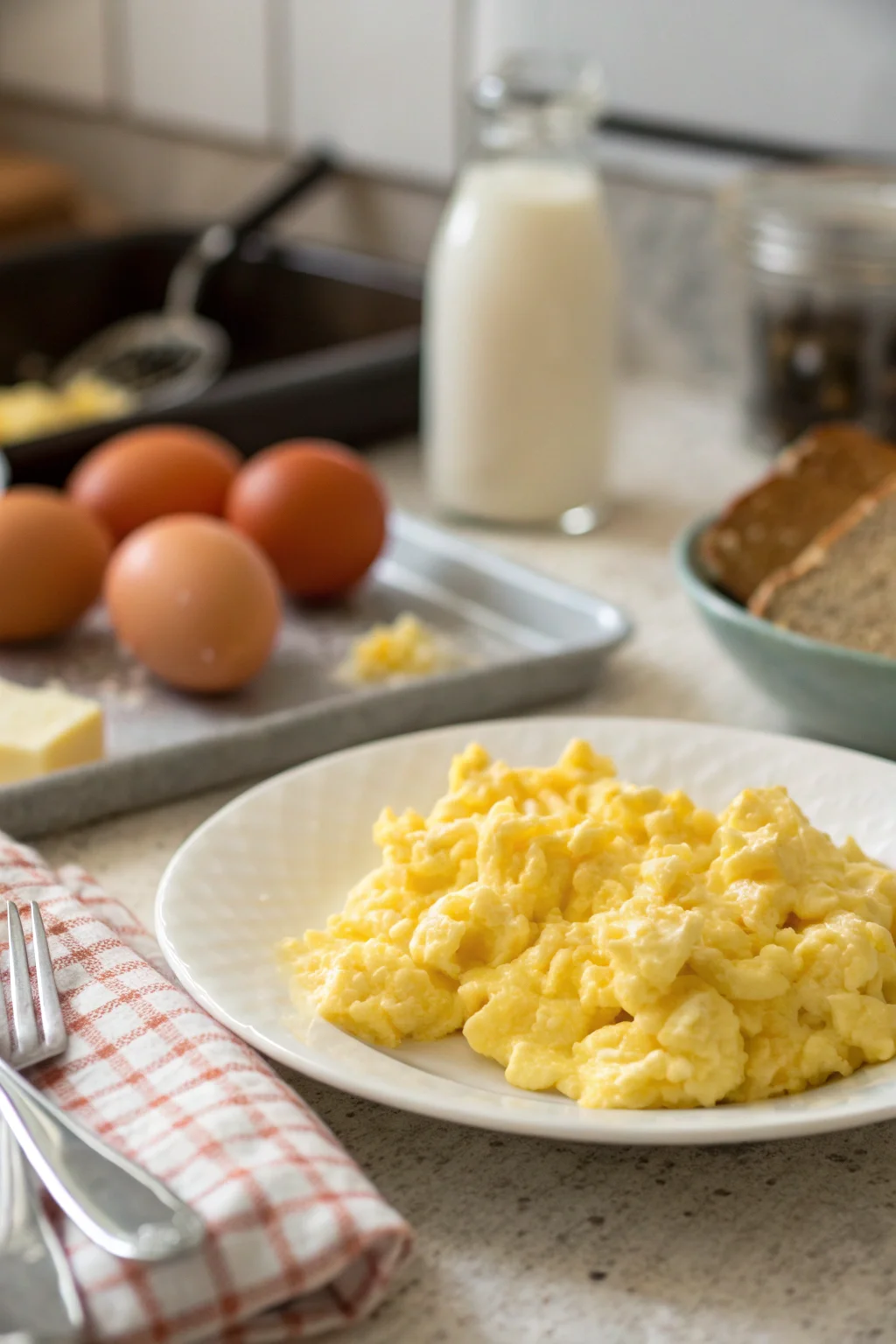
Preventing eggs from sticking involves:
- Preheating the pan: Heat your pan before adding butter. A well-heated pan helps the butter melt evenly and quickly, creating a perfect non-stick surface.
- Using enough butter: Coat the pan with butter to create a non-stick surface. Don’t skimp on the butter; it not only prevents sticking but also adds flavor.
- Stirring gently and frequently: Keeps the eggs moving and prevents them from settling. Use a gentle folding motion to move the eggs around the pan.
Ensuring the pan is preheated before adding eggs is crucial for creating a non-stick effect. If you notice the eggs are starting to stick, you can add a little more butter or reduce the heat slightly.
Should you use milk or cream?
Either milk or cream works well for adding moisture and fluffiness to scrambled eggs. Here’s how they differ:
- Milk: Adds lightness and moisture without too much richness. It’s a great option if you want a subtler flavor.
- Cream: Creates a richer, denser texture. Ideal for those who enjoy a more decadent breakfast experience.
Use about 1 tablespoon per egg for either option. If you prefer a lighter texture, opt for milk. For a creamier dish, use cream. You can also experiment with non-dairy milk alternatives like almond or oat milk, which can add unique flavors and textures.
When should you add seasoning?
Seasoning is best added before cooking:
- Salt and pepper: Mix into the eggs during the beating process. This ensures that the seasoning is evenly distributed.
Adding seasoning early allows it to distribute evenly throughout the eggs, enhancing the overall flavor. If you prefer, you can add additional seasonings like garlic powder or paprika for a different flavor profile.
How do you know when scrambled eggs are done?
Scrambled eggs are done when:
- They are just set: Look for a soft, slightly runny texture as they will continue to cook from residual heat. The eggs should be mostly set but still slightly glossy.
- Lightly creamy consistency: Avoid overcooking for the best results. The eggs should be soft and tender, not dry or crumbly.
For a more detailed guide on cooking eggs to perfection, check out our guide on egg cooking techniques. Remember that eggs cook quickly, so it’s better to leave them slightly underdone as they will continue to cook for a few moments after being removed from the heat.
Can you make scrambled eggs ahead of time?
Scrambled eggs are best enjoyed fresh, but you can prepare them in advance:
- Store in an airtight container: Keep in the refrigerator for up to 2 days. Ensure the container is well-sealed to maintain freshness.
- Reheat gently: Use low heat on the stove or microwave at reduced power. Reheating slowly helps retain the eggs’ texture and prevents them from becoming rubbery.
For optimal freshness, consider preparing other components of your meal ahead and cooking the eggs last. If you find yourself with leftover scrambled eggs, try using them in breakfast burritos or sandwiches the next day.
What are some variations to try?
To elevate your scrambled eggs, try these variations:
- Cheese: Stir in shredded cheese just before eggs set. Cheese adds richness and flavor; consider using cheddar, feta, or goat cheese for different tastes.
- Vegetables: Sauté onions, peppers, or mushrooms before adding eggs. Vegetables add texture and nutrition. Make sure they are cooked through before adding the eggs to avoid excess moisture.
- Herbs: Garnish with fresh herbs like chives, dill, or parsley. Herbs add freshness and a burst of flavor. You can also mix them into the eggs before cooking for a more integrated flavor.
Experimenting with different ingredients can enhance flavor and texture. For more breakfast inspiration, explore our article on easy breakfast recipes. Consider adding a dash of hot sauce or a sprinkle of smoked paprika for a kick.
Are there any common mistakes to avoid?
Avoid these common mistakes:
- Using high heat: Can result in dry, rubbery eggs. Always opt for a lower temperature for better results.
- Overcooking: Leads to a tough texture. Remove the eggs from the heat just before they’re fully set.
- Not whisking enough: Results in uneven texture. Make sure the eggs are well-beaten to incorporate air.
By being mindful of these pitfalls, you can ensure your scrambled eggs turn out perfectly every time. Avoid rushing the process; a few extra minutes of care can make a big difference.
What tools do you need?
Here’s a list of essential tools:
- Non-stick skillet: For even cooking. A good-quality skillet is a worthwhile investment for any kitchen.
- Whisk or fork: For beating eggs. A balloon whisk is particularly effective for incorporating air.
- Spatula: For stirring and serving. A silicone spatula is gentle on non-stick surfaces and allows for easy folding.
Having the right tools makes the process smoother and more enjoyable. You might also consider using a rubber spatula to help scrape every last bit of egg from the pan.
How can you make scrambled eggs healthier?
For a healthier version:
- Use egg whites: Replace some yolks with whites. This reduces cholesterol and calories while maintaining protein content.
- Add vegetables: Increase nutritional value with spinach or tomatoes. Vegetables add fiber and vitamins.
- Use olive oil: Substitute butter for healthy fats. Olive oil provides a different flavor profile and is more heart-friendly.
Making small changes to your scrambled eggs can improve their nutritional profile. You can also experiment with adding spices like turmeric or cumin for added health benefits.
Wrap-Up
Creating perfectly fluffy scrambled eggs is simple with the right techniques and ingredients. Remember to use fresh eggs, beat them well, cook on low heat, and season appropriately. By following these steps, you can enjoy delicious, fluffy scrambled eggs every time. For more cooking tips, visit Serious Eats and explore our collection of breakfast recipes. With practice, you’ll be able to tweak and perfect your method to suit your taste and preferences, ensuring a delightful breakfast experience every time.

